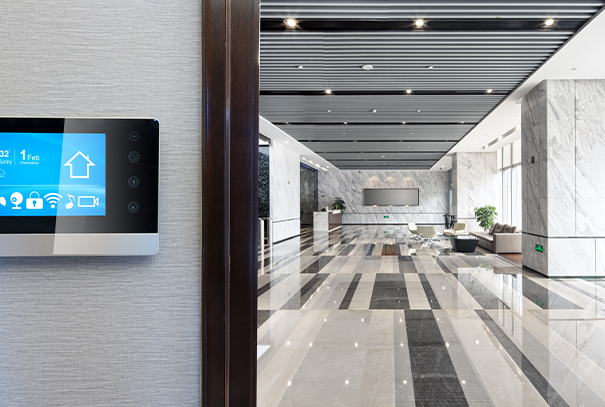
A term that has been widely adopted for a number of years, Proptech generally applies to any form of digitisation or technology that looks to simplify an existing process within the sector. Early examples include disruptors like Zoopla in the residential space, but the term Proptech casts a much wider net; encompassing anything from smart security systems through to sensor-adjusted air conditioning, and everything in-between.
Now COVID-19 appears to have accelerated the trend of Proptech adoption in both commercial and residential real estate segments. For example, the ability to understand the movement and occupancy of people within a building, for instance, has always been an attractive proposition, as it allows an occupier to better utilise its space, and re-purpose areas that are being under-utilised. With social distancing here to stay in the medium term and the safety of tenants the absolute number one priority, this technology has rapidly moved from a “nice to have” to almost a necessity as part of any significant return to the workplace.
A recent study by EQUIEM1 in their global office tenant report found that 60% of occupiers will not return to the workplace until “it feels safe.” Furthermore, it cites that the two of the most critical factors to achieving this are information and communication; two things that are arguably only truly deliverable through embracing some form of technology. It is fully understandable that tenants will now want to have certainty around cleaning regimes, and real-time updates on new in-building COVID-19 cases, in a way that was not previously required. Whilst the communication of information quickly and widely is potentially achievable through existing technology such as mobile phones, built in alarm systems and email, the ability to capture and interpret that data in real time so that it is ready to disseminate when it needs to be only feels achievable through autonomous data capture tools. Whilst retro-fitting this equipment may be expensive and challenging, it certainly appears to be the case that all future developments are now treating this as an integral part of building design and planning.
What does this mean for insurance?
As with most insurances, this question is best when split into two parts:
- Material Damage – Technology and the equipment that drives it rarely comes cheap, so property owners and tenants need to ensure that their property sums insured are adequate to cover and fully reinstate all equipment for which they are responsible in the event of damage. Linked to this, landlords also need to carefully consider their alternative accommodation conditions in their leases following a damage event, as if these require tenants to be temporarily housed in a property of equal specification, this may be more challenging, and ultimately expensive, to fulfil. Again, a regular and thorough review of these sums insured on their property policies should be undertaken to ensure they can adequately cover such an eventuality.
- Liability – The second, perhaps more challenging consideration, is around liability, and who is responsible in the event the technology malfunctions. Should any part of the technology breakdown and make the building uninhabitable, or even cause injury or illness; who is responsible? Does this still sit with the provider/installer, or has it transferred to the landlord? Furthermore, as buildings become more connected, they also become more exposed to cyber-attacks from criminals either trying to steal data, or to simply wreak havoc. Should this scenario play out, how secure is the data stored by the Proptech, and is any of it sensitive in any way?
Summary
It is inevitable, and undoubtedly an overwhelmingly positive thing, that technology is integrating itself into our built environment. Yet another benefit is that all this data should drive efficiency, leading to more environmentally friendly buildings – vital progress in achieving carbon neutrality by 2050. As with all progress, however, it changes a risk profile – something that Gallagher fully understands. Our in-depth experience of the property sector and risk management gives us a privileged position when it comes to helping our clients better understand these risks, as well as how they can mitigate against them.
1. https://assets.websitefiles.com/
Conditions and Limitations
This note is not intended to give legal or financial advice, and, accordingly, it should not be relied upon for such. It should not be regarded as a comprehensive statement of the law and/ or market practice in this area. In preparing this note we have relied on information sourced from third parties and we make no claims as to the completeness or accuracy of the information contained herein. It reflects our understanding as at 5th May 2020, but you will recognise that matters concerning COVID-19 are fast changing across the world.
You should not act upon information in this bulletin nor determine not to act, without first seeking specific legal and/or specialist advice. Our advice to our clients is as an insurance broker and is provided subject to specific terms and conditions, the terms of which take precedence over any representations in this document. No third party to whom this is passed can rely on it. We and our officers, employees or agents shall not be responsible for any loss whatsoever arising from the recipient’s reliance upon any information we provide herein and exclude liability for the content to fullest extent permitted by law. Should you require advice about your specific insurance arrangements or specific claim circumstances, please get in touch with your usual contact at Gallagher Construction.


